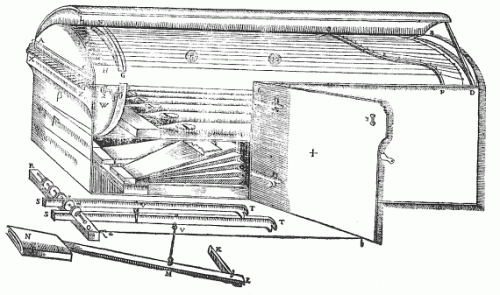Technical drawings of instruments are of interest to instrument builders, organologists, and iconographers—they may also be useful for researchers working on performance practice, theory, or aesthetics. Technical drawings may also be found as freestanding publications issued by museums and collections to encourage reconstructions of the historical instruments that they own.
This example from Athanasius Kircher’s Musurgia Universalis (1650) shows the inner workings of a claviorganum, which Michael Praetorius described in his Syntagma musicum.II: De organographia (1619) as a keyboard instrument in which strings and pipes “sound together to produce a pleasing sound”.
Below, a claviorganum in action.



